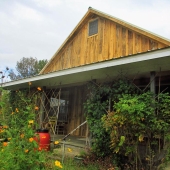Maybe there is another additive that will change the pH of wood and leather surfaces so they will not support mold.
Good luck. No matter what chemical you try, there is a fungus (mold) out there that can eat it. That's the downside of living in a world where things recycle -- if you want to keep something from the natural methods of recycling, you have to break the metabolic triangle. You all know the fire triangle, right? Fuel, oxygen, source of ignition? Well there is a metabolic triangle for fungal decomposition: food, moisture, spores. In the case of preserving your wood or leather, the food, you have to get rid of one of the other two. Now since spores are airborne and can and do get anywhere and everywhere, that leaves getting rid of the moisture.
In the winter, heating naturally dehumidifies the inside of houses, but in the summer, the only way to dehumidify the inside of the house is to close the windows and turn on the dehumidifier or the A/C. Oh, there are chemical dessicants you can use, but that's only good for a small volume, say a cedar chest or a trunk, or a hermetically sealed bag.
I live in a particularly interesting area of the South, as we get a combination of pine sap aerosols, humidity and spores that make it possible for mold to grow just about anywhere -- like on my white truck -- and the house siding. That's why pressure washing is so popular in this area; a little soap and bleach and high pressure water and your house looks like it was repainted. Bleach is the standard for killing fungal spores -- oxidizes them out of existence. Maybe you have read about seed treatments where a short soak in a dilute bleach solution was one of the steps? This is why.
I would suggest that you make some compromise between being totally natural and taking advantage of modern dehumidifier/air conditioning technology. There are small closet sized dehumidifiers, and you could keep the things you value and don't want to get mold in there with the door closed and the dehumidifier running.















































